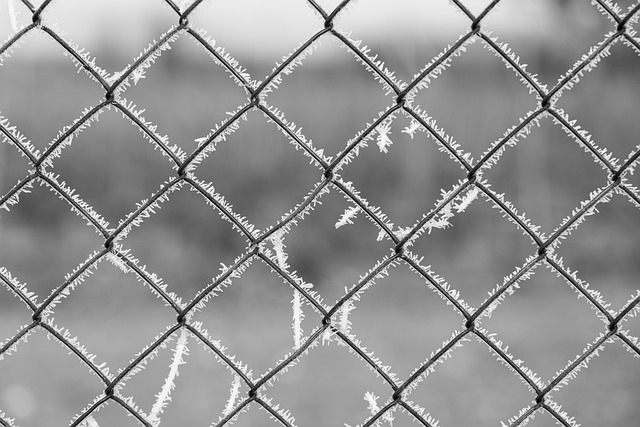Coastal areas present unique challenges for fencing due to relentless wind, salty air, and varying moisture levels. Traditional fences often fail to withstand these harsh conditions. However, durable wooden fencing offers a reliable solution with proper selection and installation. This article explores how to choose and maintain wood fence materials that can endure coastal environments, enhancing both aesthetic appeal and structural integrity for years to come.
- Understanding Coastal Environment's Impact on Fencing
- Advantages of Durable Wooden Fencing Materials
- Choosing the Right Species for Saltwater Resistance
- Installation Techniques for Longevity in Harsh Conditions
- Maintenance Tips to Ensure Long-Lasting Performance
Understanding Coastal Environment's Impact on Fencing
The unique challenges posed by coastal environments require specialized considerations when it comes to fencing. Saltwater, strong winds, and harsh weather conditions can significantly impact materials over time, making durability a top priority for any outdoor structure. Wooden fences, in particular, must be chosen and installed with these factors in mind to ensure longevity.
In these areas, traditional fencing materials might not hold up against the relentless assault of saltwater and extreme climate. Regular wood can rot, warp, or become infested with pests like termites, leading to structural damage and an unsightly appearance. Durable, treated wooden fences are a superior option, offering enhanced resistance to moisture, rotting, and insect infestation, ensuring they stand strong against the coastal elements for years to come.
Advantages of Durable Wooden Fencing Materials
Durable wooden fencing materials offer a unique blend of aesthetics and functionality, making them an excellent choice for coastal areas. One of the primary advantages is their natural beauty, which enhances outdoor spaces while providing privacy and security. Unlike other materials that may require frequent replacement or maintenance, high-quality wood can withstand harsh coastal conditions, including salt air and moisture, without losing its integrity. This longevity reduces the need for costly repairs and replacements, making it a cost-effective option in the long run.
Moreover, wooden fences provide excellent flexibility in terms of design and customization. They can be shaped into various styles, from traditional picket fences to elegant post-and-rail designs, allowing homeowners and businesses to express their individual tastes. Additionally, wood is a renewable resource, contributing to sustainable practices and making it an eco-friendly choice for those concerned about environmental impact.
Choosing the Right Species for Saltwater Resistance
When selecting wood for coastal fencing, understanding saltwater resistance is key. Different species exhibit varying levels of resilience to the corrosive effects of salt water and salty air. For durable wooden fences in coastal areas, look beyond common softwoods that are notorious for their weakness in such environments.
Hardwood species like redwood, cedar, and teak are superior choices due to their natural resistance to moisture and decay. These woods contain oils and resins that deter the growth of mold, mildew, and insects, ensuring they remain strong and beautiful even when exposed to harsh coastal conditions.
Installation Techniques for Longevity in Harsh Conditions
When installing wooden fencing in coastal areas, specialized techniques are essential to ensure longevity amidst harsh conditions like salt air, high humidity, and regular exposure to extreme temperatures. One effective method is pre-treating the wood before installation with protective coatings or preservatives designed to resist rot and insect damage. This step is crucial as it creates a barrier between the wood and the elements.
During installation, proper spacing between posts is vital to accommodate potential ground movement and prevent water accumulation. Using concrete foundations secured with rebar ensures stability, while adding extra brackets and reinforcing hardware can enhance structural integrity. Regular maintenance, including cleaning and reapplying protective coatings, is also key to keeping the fencing in top condition over time, ensuring it stands strong against coastal challenges.
Maintenance Tips to Ensure Long-Lasting Performance
Regular cleaning and inspection are key to maintaining your wooden coastal fencing. Salt air and moisture can accelerate wood decay, so it’s important to wipe down the fence regularly with a soft cloth or brush to remove any salt buildup. A water rinse or gentle pressure wash every few months will help keep the fence clean and free from debris.
Look for signs of rot, cracks, or loose boards during inspections. Promptly repairing any damage will prevent further issues. Apply a fresh coat of sealant every year to protect the wood from the elements, ensuring its longevity. Store extra materials like sealers and brushes in a dry place to avoid them being affected by coastal conditions.
